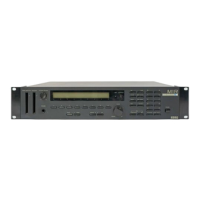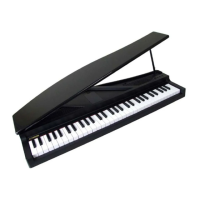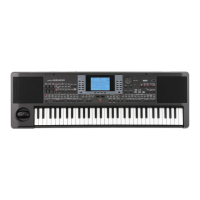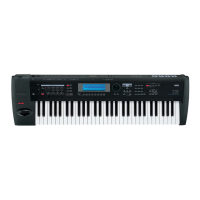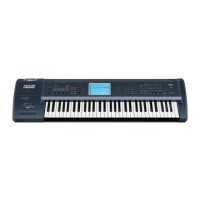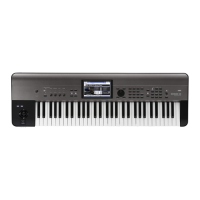Detailed Editing with Programs Overview of editing pages
51
Quick Start
Introduction
SetupProgram
Combination
Sequencer
SamplingGlobalMediaEffectKARMA
Drum Track
Other
Appendices
Detailed Editing with Programs
Creating your own Programs
You can create original sounds by editing a preloaded
program or by editing an initialized program. The
programs (EDS) you create can be saved in banks INT-
A–INT-E or USER-A–USER-G. For details, please see
“Saving your edits” on page 50.
You can also create Programs using RAM
multisamples that you have sampled or loaded from
media. In addition, you can play a Program and
resample your performance, or sample an external
audio source while listening to the sound of a
Program.
Note: When the M3 is in its factory-set state, EDS
Programs are the only programs that can be used. If
you install the optional EXB-RADIAS, you’ll be able to
use RADIAS Programs. Here we will explain EDS
Programs. For more about RADIAS Programs, please
see “EXB-RADIAS for M3 Manual” on the CD-ROM.
Overview of editing pages
P0: Play is where you select and play programs, make
quick edits using the Control Surface, and adjust the
KARMA settings. The other pages let you modify the
sound in more detailed ways.
Program mode page structure
For details on how to access each mode and page,
please see “Basic operations” on page 22.
Sampling or resampling can be performed in Program
mode. For details, please see “Sampling in Program,
Combination, and Sequencer modes” on page 122.
Since you can apply the M3’s internal effects to the
external audio inputs, a wide range of possibilities are
available. For details, please see “Program Effects
settings” on page 155.
Basic oscillator settings
Program type setting (single, double,
drum kit)
Here you can specify the type of program (whether to
use one oscillator, two oscillators, or a drum kit). Use
the Prog P1: Basic/DT/Ctrls– Program Basic
Oscillator Mode to specify the program type.
Single Programs have one oscillator, and Double
Programs have two oscillators. Each oscillator is a
multisample that is switched by a crossfade velocity
switch. You can use dual filters, EG, and LFO to create
the sound.
Drums mode is a special variation of Single mode, and
uses a Drum Kit (as created in Global mode) instead of
Multisamples.
Polyphony
Polyphony is the number of notes that can be played
simultaneously, such as in a chord. The polyphony
depends on the program type.
Note:
• Double Programs use twice as many voices as
Single Programs.
• Stereo Multisamples use twice as many voices as
Mono Multisamples.
• If using velocity crossfade switching, the
multisample will use twice as many voices as usual.
Page Main content
PLAY
P0: Play
Select and play programs.
Simple KARMA editing.
Audio input settings and resampling
settings.
Editing from the control surface.
EDIT
P1: Basic/DT/Ctrls
Basic program settings, such as voice
assign mode.
Drum Track settings.
X–Y control settings.
SW1, 2, and slider function settings.
Pad note and velocity settings.
P2: OSC/Pitch Oscillator selection and pitch settings.
P3–1: Filter1 Filter 1 (tone) settings.
P3–2: Filter2 Filter 2 (tone) settings.
P4: Amp/EQ
Amp 1, 2 (volume) settings.
Amp 1, 2 driver and pan settings. 3-band
parametric EQ settings.
P5: LFO LFO settings.
P6: AMS/
Common
KeyTrack
AMS Mixer settings.
Common keyboard tracking settings.
KARMA
P7–1: KARMA1
GE Setup/Module
Overall settings for KARMA, and settings
for each module.
P7–2: KARMA2
GE RTP/Perf
KARMA realtime parameter settings and
performance parameter settings.
EFFECT
P8: IFX
Oscillator output bus and master effect
send level settings.
Insert effect routing, selection, and
settings.
P9: MFX/TFX
Master effect routing, selection, and
settings.
Total effect selection and settings.
Program type Polyphony
Single 120
Double 60
Drums 120
